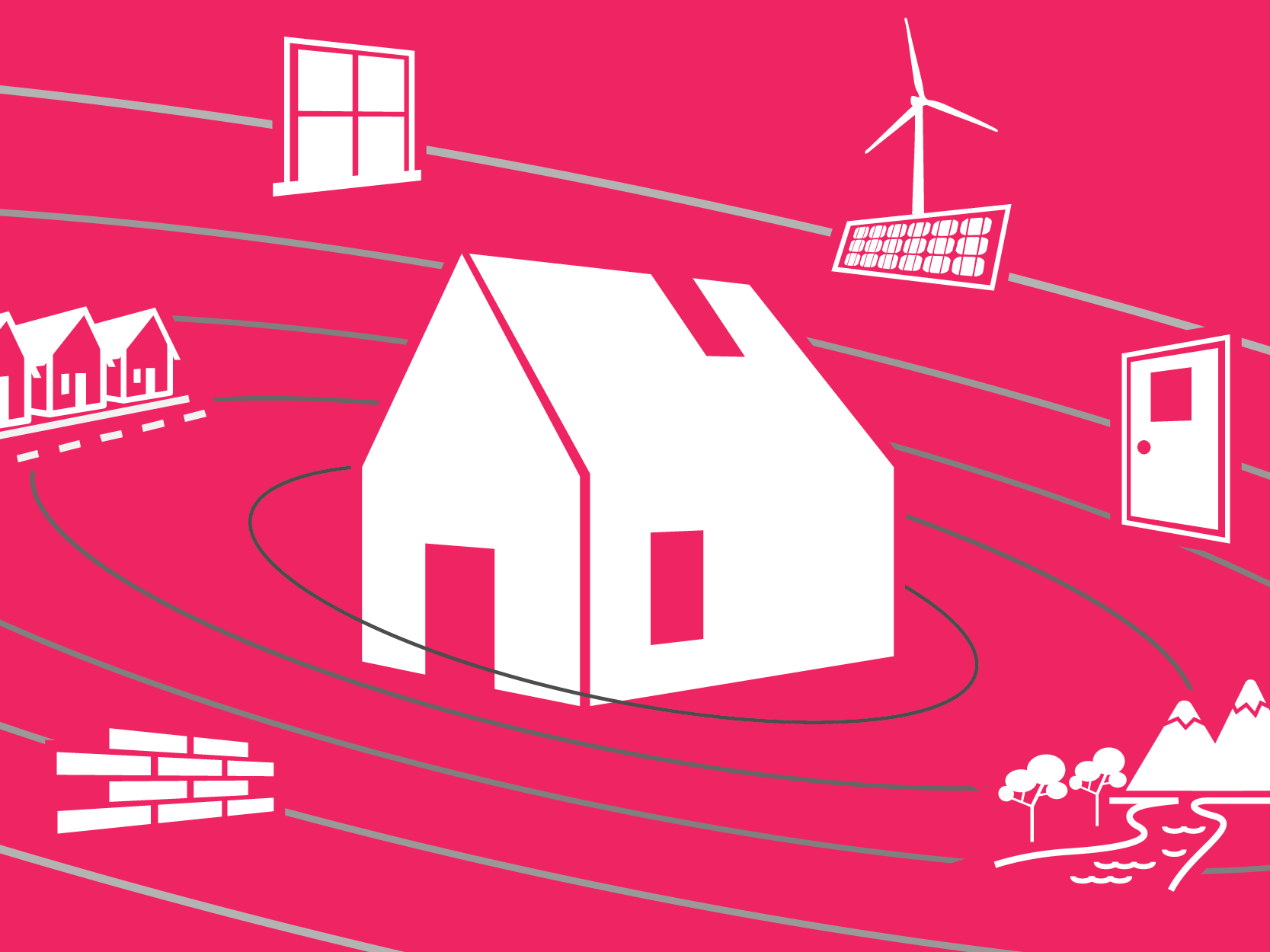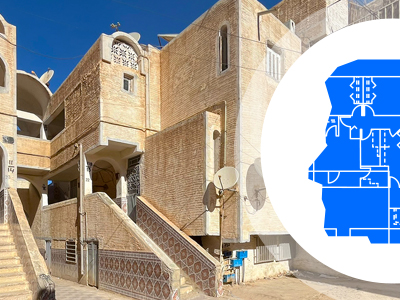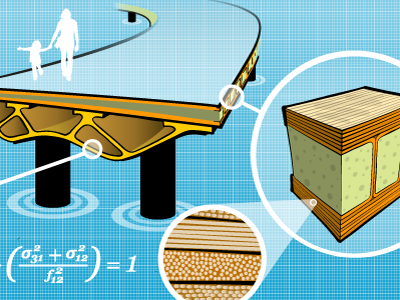Overview
Course video
Innovations in architecture, engineering and manufacturing make it feasible to construct almost any building in timber, including high-rise structures. Discover how this way of building could help solve our climate, resource and housing related challenges.
The way we construct our buildings needs to change! Over 35% of our global greenhouse gas emissions are attributable to the built environment. A third of that amount is specifically related to the production of abiotic (non-renewable) materials such as concrete, metals and plastics. The associated challenges are not only climate related, but also concern resource scarcity, health and housing provision.
A viable alternative to our current construction paradigm is building with timber. Recent advances in the capabilities of timber manufacturing offer opportunities for large-scale application in the build environment, whilst also going much of the way to solving the aforementioned challenges.
In this course you will learn how we can – and why we should – support the greater use of timber in our built environment by implementing a combined 'sustainable forestry' and 'timber for construction' supply chain.
Sustainable forest management allows us to use timber while preserving forests by taking ecological and social, as well as economic factors into account. Sustainably sourced timber can store carbon, both in forests and in buildings.
Timber is also an ideal material for prefabrication, which allows us to shift the bulk of construction labor to manufacturing halls and make the building process itself cleaner, quicker, of a higher quality, and less of a nuisance on-site.
Additionally, an ideal timber construction process should incorporate circular building practices allowing us to re-use timber structures at individual building and regional level.
Overall, when compared with traditional construction based on heavy abiotic materials, this will result in healthier buildings which store carbon instead of emitting it, while the raw resource grows back in sustainably managed temperate forests.
This course is relevant for all stakeholders in the built environment – architects, developers, engineers, consultants and policymakers – as well as students who want to learn more about the opportunities and cutting-edge best practices for designing and building with timber.
What You'll Learn
- Gain fresh insights into the importance of building sustainably with timber from well-managed forests
- Familiarize yourself with the environmental impact and carbon footprint of timber constructions
- Analyze and identify circular timber building design typologies
- Evaluate the cohesion and stability of timber load-bearing structures
- Examine the building physics and design qualities of modern timber buildings
- Discuss the benefits of prefabrication and building processes
Details
Course Syllabus
Module 1 - Why use timber for sustainable building?
We will explore the importance of shifting to a (more) timber and bio-based construction industry, within the larger societal context of circularity, sustainability and the move toward a ‘post-carbon’ building sector. You will learn how this includes the entire value chain from sustainable forestry to the socio-cultural and economic aspects of policies that hinder, or favor, timber construction and innovation.
Module 2 - Environmental impacts of building with timber
We will explain the relevance of assessing the environmental impacts of building with timber vs. conventional materials, with a method called Life Cycle Assessment (LCA). You will learn the general framework of LCA, and compare results based on an illustrative case study assessing alternative materials. We will then focus on the comparison of carbon footprints, end-of-life scenarios, and the importance of prolonging product lifespans.
Module 3 - Basics & Principles in Timber Construction
You will embark on a journey through the evolution of timber construction, starting with the history of timber products, from traditional sawn timber to modern CNC-milling. We will delve into the basic properties of wood, its structural capacity, fire safety and seismic resistance, and its impact on acoustics and well-being.
Module 4 - Multi-Storey Timber Buildings
Journey through the intricacies of timber structures and components, traversing from basic log construction to advanced space module methodologies. We will define building heights and explore the diverse timber building typologies ranging from low-rise, mid-rise, refurbishments and topping-ups, to the ambitious high-rise and tall timber constructions. Concluding the module, you will encounter hybrid timber systems: both those combining varied wood species into harmonious structures and the innovative composite concrete floor systems setting the standard for multi-storey edifices.
Module 5 - Advanced topics and future trends
You will delve into the historical evolution of joinery culture and the crucial role it plays in timber construction. You will explore timber façades and discover the products that shape their beauty. Water management strategies, the anatomy of skins and the thermal envelope will become your ally as you understand its impact on timber façades. Prefabrication of components and assembly with elements will unlock new possibilities for efficient construction, adaptability and values for change. And as we look to the future of timber construction, you will be inspired by innovations yet to come.
Module 6 - Prefabrication and building process benefits
We will explore the prefabrication potential of building in mass timber. You will go on a short (virtual) tour through a conditioned manufacturing hall to understand how activities associated with construction can easily be moved away from building sites, and why they should be.
Other instructors
- Michelle Stede, project manager for the circular economy at FSC Netherlands
- Arjan Alkema, deputy director at FSC Netherlands
- Joke Dufourmont, Program Developer Circularity in Urban Regions at AMS Institute
This course has been developed by TU Delft’s Faculty of Architecture and the Built Environment and the Circular Built Environment Hub, in collaboration with VIA University College Denmark, FSC Netherlands, the AMS Institute, Ssse | OvO associates architects, Lister Buildings, Material District and geWOONhout in the context of the HOME for the future project.
Co-funded by EU.

LIFE20 GIE/NL/001073 - LIFE timber in housing
Views and opinions expressed are however those of the author(s) only and do not necessarily reflect those of the European Union or CINEA. Neither the European Union nor the granting authority can be held responsible for them.
Qualifications
Chartered Engineering Competences
All our online courses and programs have been matched to the competences determined by KIVI’s Competence Structure, a common frame of reference for everyone, across all disciplines, levels and roles.
These competences apply to this course:
- A1: Extend your theoretical knowledge of new and advancing technologies.
- E3: Undertake engineering activities in a way that contributes to sustainable development and a circular economy.
Admission
This is a Massive Open Online Course (MOOC) that runs on edX.
Prerequisites
None


